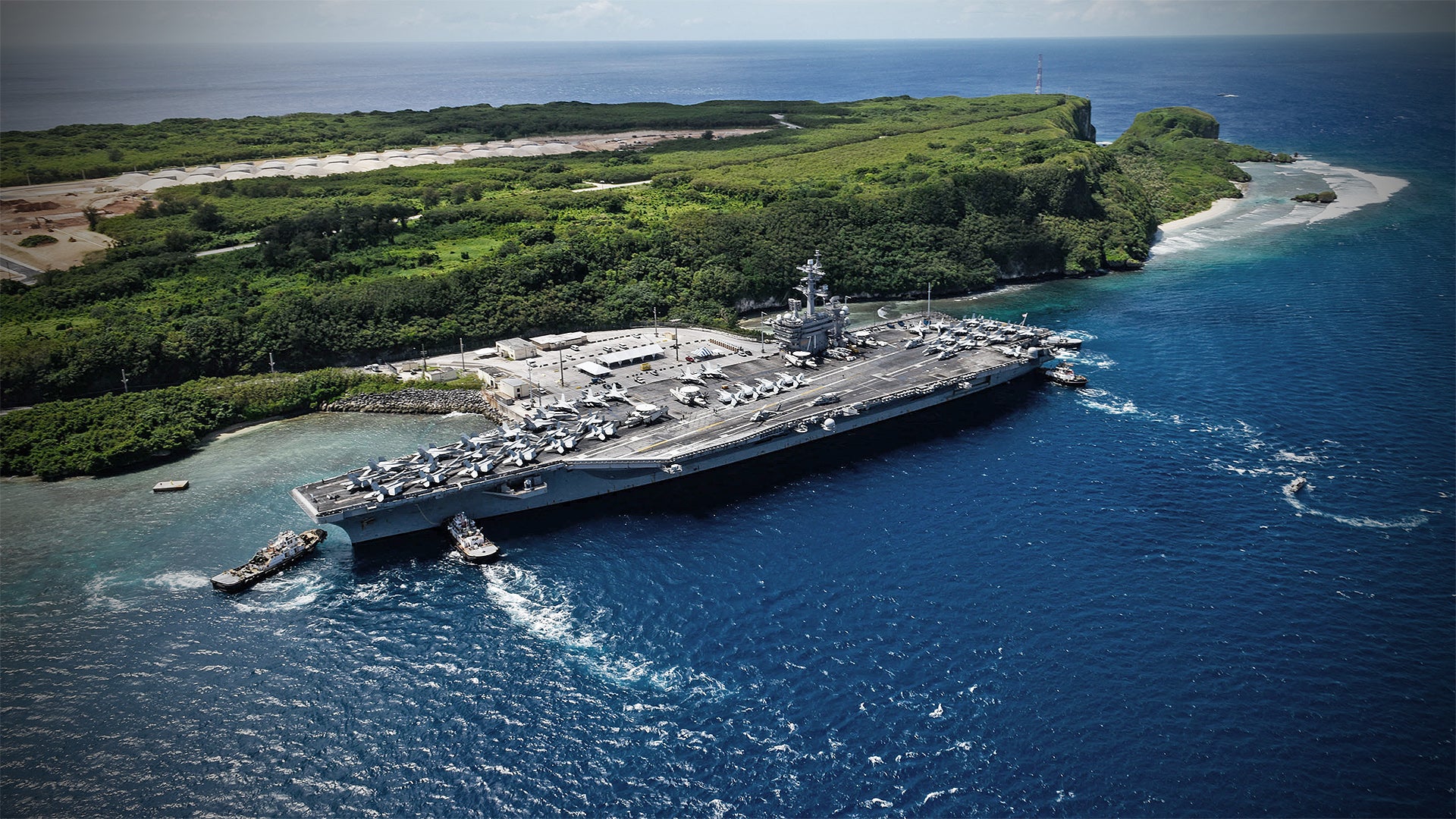Two days ago, three U.S. Navy sailors aboard the aircraft carrier USS Theodore Roosevelt (CVN-71) tested positive for COVID-19. Yesterday an additional five sailors tested positive. This is the first time that the Navy has detected the virus aboard a warship at sea. While aircraft carriers have capable and well-equipped medical departments, complete with operating rooms and intensive care units, ships at sea are an extremely difficult environment in which to quarantine individuals who are infected. Accordingly, Roosevelt has suspended its deployment and is now in port in Guam. The entire ship will be placed in quarantine while its crew, literally all of the personnel aboard, will be tested for COVID-19.
Quarantine In Guam
Until yesterday, Roosevelt was operating in the Philippine Sea, northwest of Guam. While there is no good place for an entire aircraft carrier to go into quarantine, Guam is the best of several bad options. The vast majority of seaports in the world are collocated with highly concentrated populations. This is not the case in Guam. The population is concentrated on the central and northern plain of the island, while the Navy port and piers in Apra Harbor are located in the sparsely populated southern end of the island. As the picture below shows, Naval Base Guam is surrounded by open green space with no population density to speak of.

Beyond that, there is a separate aircraft carrier pier that is even further isolated from the rest of the base, located at the end of a peninsula, with a single two-lane road leading down to it. If a ship is to be quarantined pier-side, Naval Base Guam is not just the closest location for Roosevelt, it also has the optimal configuration.
How the quarantine will work in practice is yet to be determined. Roosevelt might not even stay pier-side. In order to achieve complete isolation, Navy leadership may decide to anchor the ship out in the middle of Apra Harbor. In this photo, you can see the USS Kitty Hawk (CV-63) at anchor with the carrier pier visible in the background. In this scenario, resupply of Roosevelt would probably take place via Vertical Replenishment (VERTREP) from helicopters. By using only external loads hung in cargo slings, no person to person contact would occur between sailors onboard Roosevelt and Navy helicopter personnel operating out of Anderson Air Force Base, located just 20 miles to the north.
Viral Outbreaks On Ships Are Extremely Hard To Contain
While the economic implications of the COVID-19 outbreak are significant and highly visible, an outbreak of the virus aboard an aircraft carrier presents a fundamentally different challenge, with different implications, than an outbreak on land. Virtually any shipboard environment presents difficult conditions to contain a viral outbreak, but this is true more so on an aircraft carrier than on any other type of ship. When the carrier is deployed with its embarked air wing, there is over 5,000 personnel aboard. The only other type of ship that embarks a similar number of people is a cruise ship. Unlike cruise ships, which offer some personal space and the potential for quarantine as a protective measure against infection, sailors onboard aircraft carriers live in tightly confined spaces and eat in communal settings.
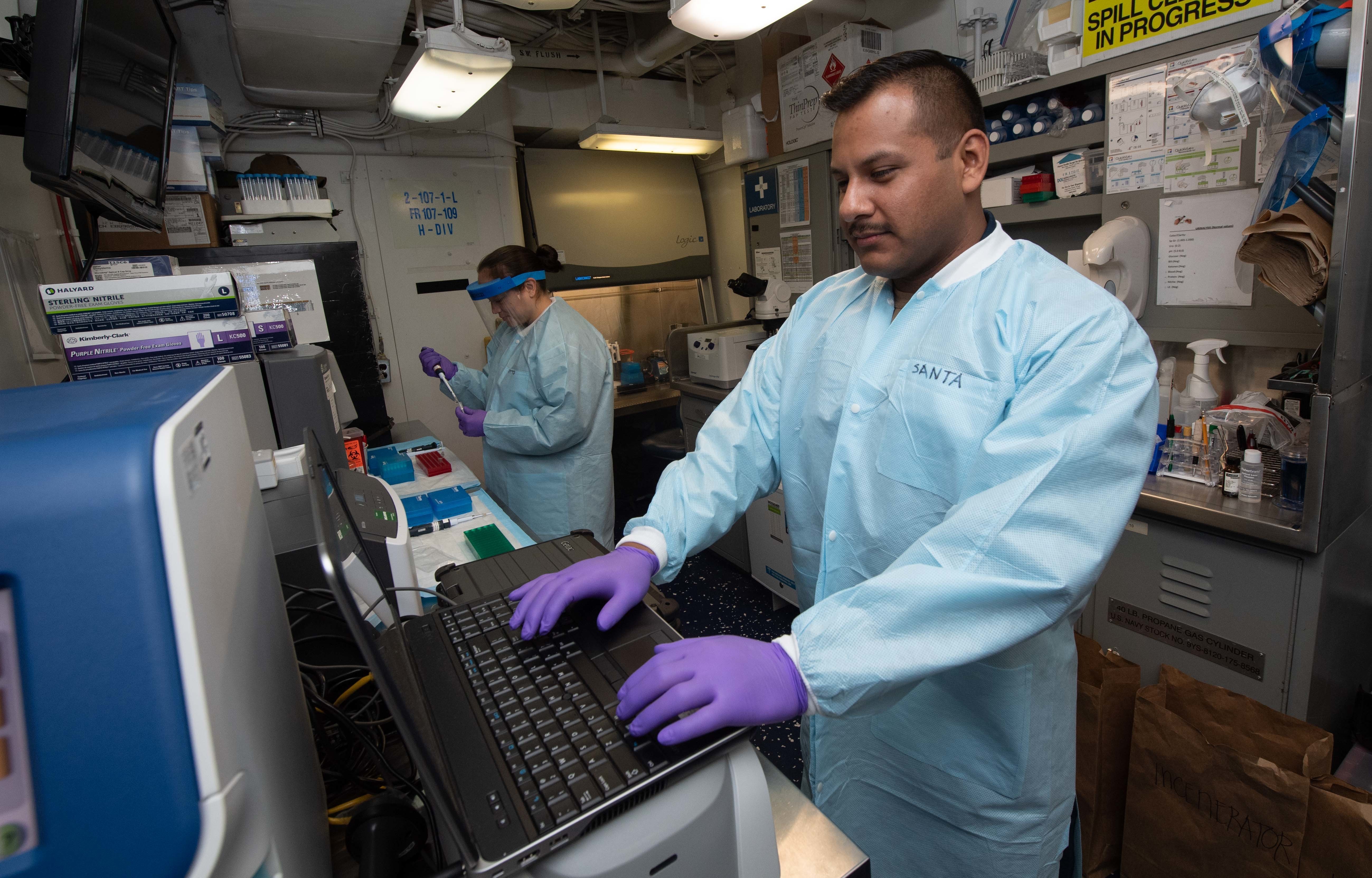
As a practical matter, it is simply impossible to engage in any social distancing onboard an aircraft carrier. The potential for a few cases to spread out amongst the entire ship and air wing crew is extremely high. According to a study by the National Institutes of Health (NIH), the COVID-19 outbreak aboard the cruise liner Diamond Princess experienced a reproduction rate four times higher than on land in Wuhan, China, where the outbreak originated. Point being, even though the Navy has strict guidelines to prevent outbreaks of infectious diseases, such as norovirus, once any virus finds a human host onboard a ship, it’s extremely difficult to contain. This is one of the reasons the Navy is obsessive about cleanliness aboard ships.
At the beginning of the article, we briefly mentioned that aircraft carriers have small, but well-equipped medical facilities onboard. The Navy’s fleet of amphibious assault ships is also similarly equipped. But for the most part, the purpose of the surgical suites or intensive care units onboard these large vessels is to stabilize casualties and keep them alive for further transport to shore-based hospitals with full trauma centers and all the medical equipment and supplies needed to treat patients in critical condition in a sustained manner. Isolating highly infectious persons is also something these facilities were not necessarily designed to handle.
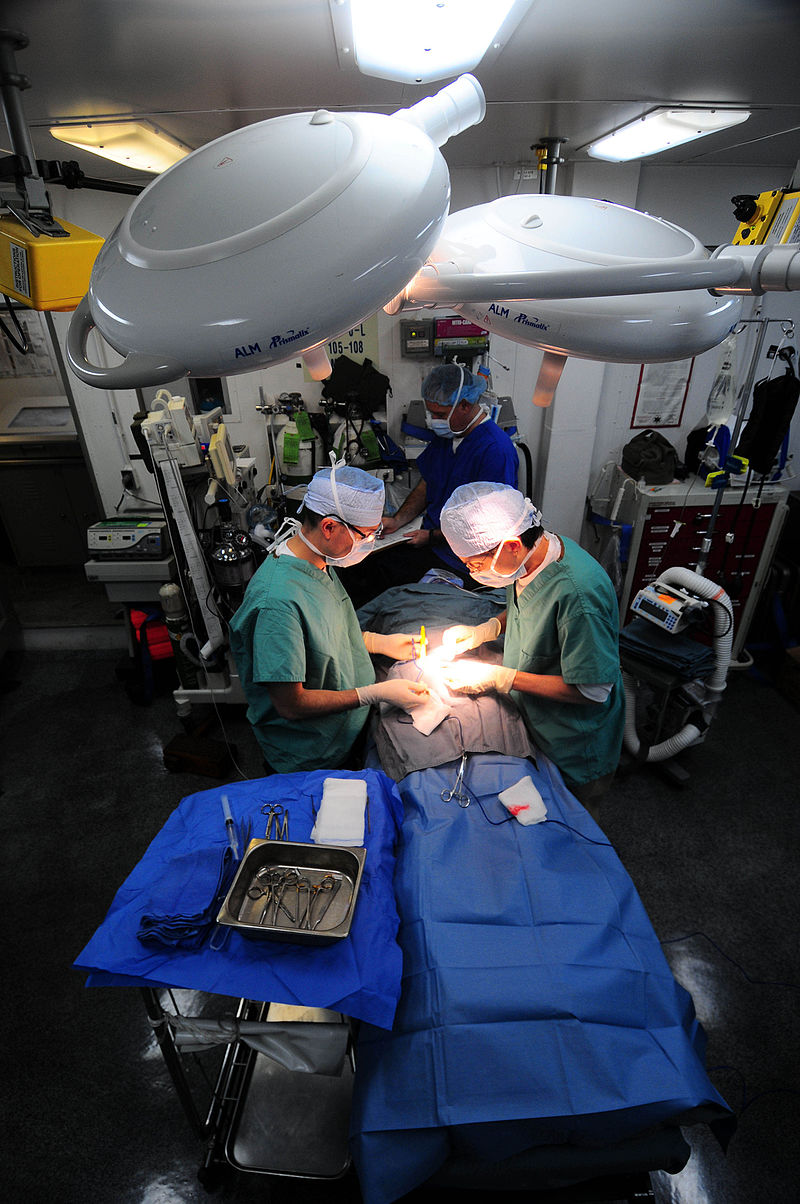
In the case of COVID victims, many of those patients require intubation and ventilators to keep them alive. This treatment can last for several days, even weeks. Aircraft carriers and amphibious assault ships simply aren’t manned or equipped to provide long term intensive care to patients with these types of symptoms. Smaller surface combatant vessels, including the Arleigh Burke class destroyers and Littoral Combat Ships, are only equipped with a basic single room medical dispensary and a few enlisted medical personnel. They do not have doctors onboard and would be challenged to provide any effective treatment to a patient suffering from advanced COVID-19 symptoms. Point being, the Navy’s only option in response to a sailor testing positive for COVID-19 onboard such a ship is to immediately evacuate that sailor and hope nobody else was infected. Keeping an infected sailor onboard for treatment is simply out of the question.
Mass Vomiting And Diarrhea Lead To Sympathetic Vomiting
Think about the last time you were sick – I mean really, really sick. Like food poisoning sick. You might have vomited several times. You might have experienced diarrhea for a period of time. But if you were sick at home, you probably had access to a private bathroom, shower, bath, and sink nearby with unlimited fresh water, soap, and toothpaste. Above all, you probably had at least a measure of privacy to wallow in your misery by yourself.
Now think of experiencing those symptoms with hundreds of other people packed into tight quarters, sharing communal restroom and shower facilities. Imagine some of those people you are sharing facilities with are temporarily incapacitated and their aim, so to speak, is not state of the art and they can’t clean up after themselves. That’s what a tightly packed ship full of sailors who all get sick at once is like.
I never knew there was such a thing as sympathetic vomiting until I, and the three fellow junior officers who lived with me in a four-man stateroom onboard USS George Washington (CVN-73) all got food poisoning from eating tainted chicken shawarmas purchased from a roadside vendor on the pier in Jebel Ali, United Arab Emirates. If Abu Dhabi and Dubai, with its uber-luxurious archipelago of man-made islands just offshore are the tourist showcases of the Middle East, then Jebel Ali, the gritty industrial port facility located between those two opulent cities, is where the dirty work gets done. Amazingly, here is a picture from the National Archives showing this exact port call in December of 1997:
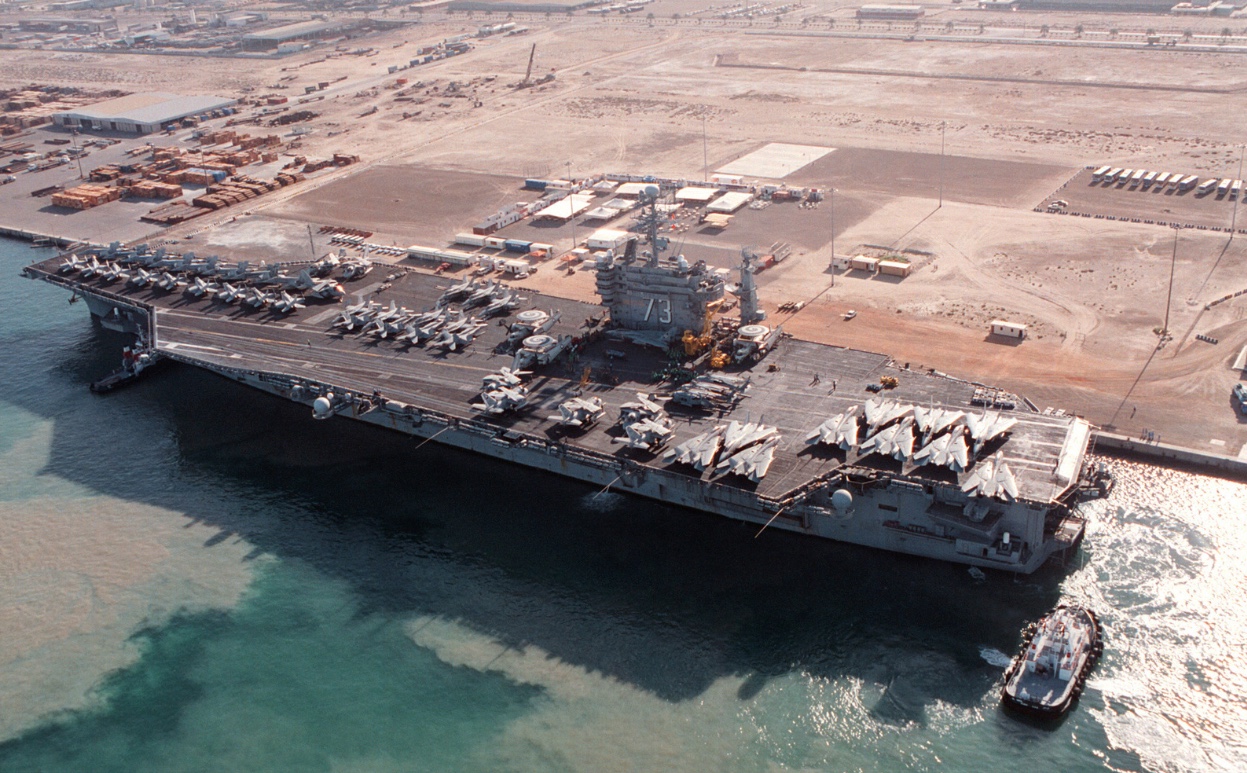
In any case, my three roommates and I, living in the comparative luxury of a stateroom the size of a normal single bedroom, equipped with two bunk beds and an in-room sink, all pulled duty or alert the same day in port. By the time we were authorized to depart the ship, it was too late to grab a bus to make it all the way to Dubai for a decent meal, so we picked up some shawarmas from the roadside vendor on the pier. Most everyone reading this article who has been in the Middle East has experienced shawarma roulette, one way or another, and this time all four of us got hit.
Once we were back on the ship that night, we all started feeling a little queasy. One of my roommates tried to sleep it off, failed, and as he attempted to depart the room and run to the communal restroom down the hall, he vomited. This is where the sympathetic vomiting comes in. While all four of us were on track to get sick, the one guy that puked first sort of catalyzed a collective response. I made it to the sink, but my other two roommates did not. Within 15 seconds or so, our room smelled horrible. We weren’t drunk or incapacitated, just sick, so we were able to clean up the tile floor, metal walls, and metal sink basin in about ten minutes. Fortunately, after this first session, subsequent physiological events were more manageable. Keep in mind, as junior officers, we had more spacious accommodations than the enlisted crew members, who are routinely assigned to common berthing areas with dozens of other sailors.

Unlike food poisoning, COVID-19 victims don’t typically present with vomiting and diarrhea, but do suffer from inflamed airways. With that in mind, if one person on a ship has the virus, the chance of it spreading throughout the crew is very high. That’s why it is imperative for the Navy to get these infected sailors off of Roosevelt as soon as possible and quarantine the ship for the duration.
I can only imagine the ship cleaning that is taking place right now, with industrial quantities of disinfectant.
National Security Implications Are Significant
While the health and safety of the crew onboard Roosevelt is of paramount importance, the risk to national security of losing a carrier on deployment to a viral outbreak is also significant. If enough members of any ship’s crew are diagnosed with a highly contagious or dangerous virus, the Navy will either delay or discontinue that ship’s operational schedule. This is what happened to the USS Dubuque (LPD-9) in 2009.
After 50 members of that ship’s crew reported flu-like symptoms, the Centers for Disease Control (CDC) confirmed that at least one crew member had tested positive for the H1N1 virus. Accordingly, the Navy canceled Dubuque’s participation in a scheduled exercise and delayed its deployment. If the COVID-19 outbreak is not contained onboard Roosevelt, the Navy will almost certainly have to suspend its deployment. If that happens, it might eventually anchor up off Okinawa to use the naval hospital there, or possibly stay in port in Guam or head to Hawaii, or even return all the way to its homeport of San Diego. What it won’t do is continue deployment with more and more crew members contracting the potentially lethal sickness. That could be very problematic for reasons other than the crew’s safety.

Aircraft carriers are the front line of America’s forward-deployed military presence. Combatant Commanders (COCOMS) crave the highly visible and potent presence that Carrier Strike Groups (CSG) bring to the table. CSGs can provide deterrence, build partner capacity through exercises with allied nations, and conduct kinetic strikes against targets on short notice. As an example of the utility of CSGs, US Central Command (CENTCOM) is currently operating two CSGs in the Middle East in order to demonstrate “combined joint capability and interoperability to plan and conduct multi-task force operations in the U.S. Central Command area of responsibility.”
Reasonable people can differ on whether the aircraft carrier, with its massive cost basis and uncertain survivability against modern anti-ship ballistic missiles and other emerging threats, is still the best option for protecting American interests abroad. With that said, for the near future at least, the aircraft carrier still plays a central role in America’s national security strategy, and a COVID outbreak on a currently deployed aircraft carrier threatens to remove that forward-deployed part of America’s national security construct on short notice and leave a large and unfillable gap for a period of at least several months.
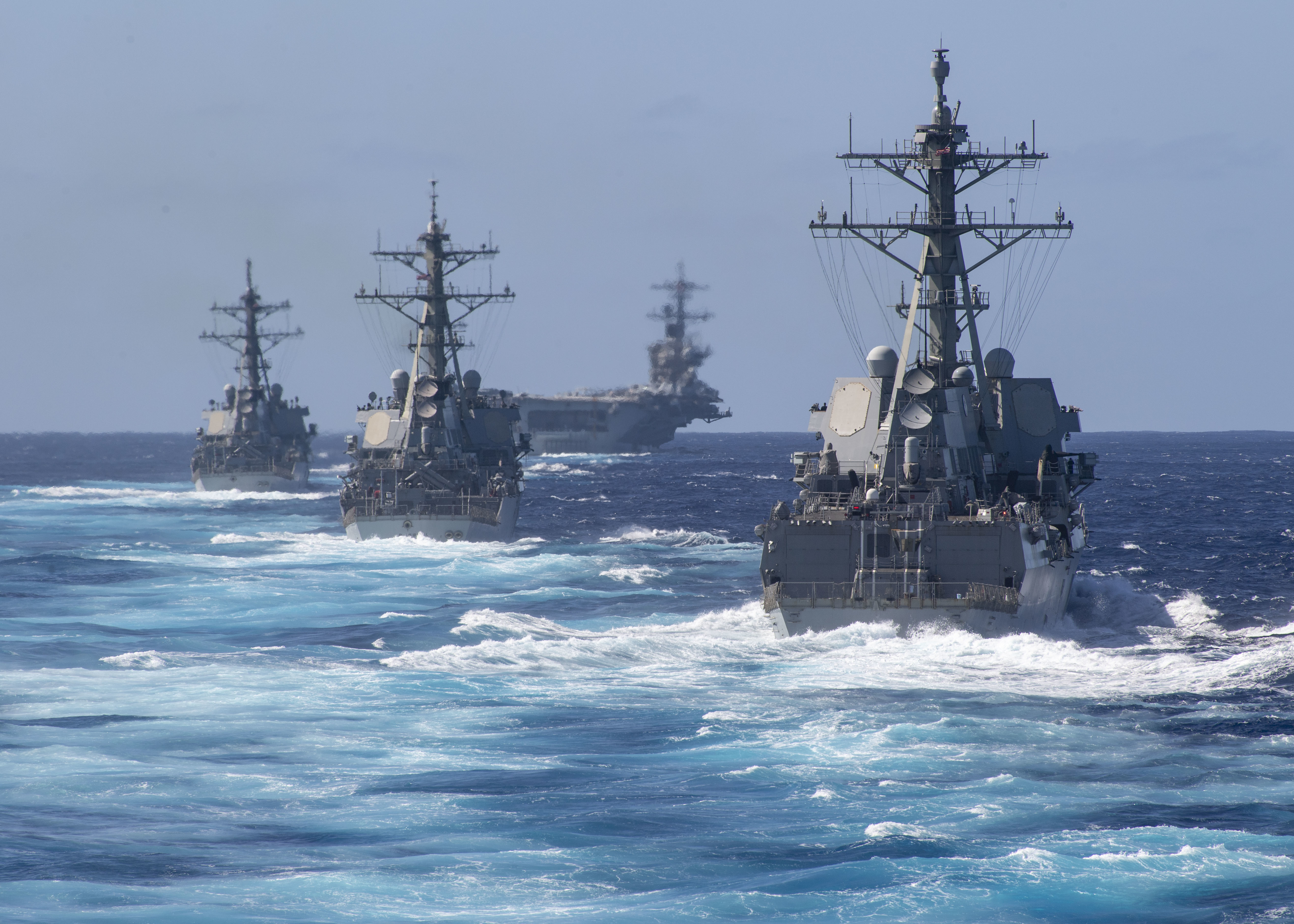
Even with the high visibility role aircraft carriers play, there are other vessels that play a less obvious, but perhaps more critical role. The US Navy operates 14 Ohio Class ballistic missile submarines. Ballistic missile submarines are the most survivable element of the nuclear deterrence triad and are considered largely impervious to enemy detection. They represent a near-guaranteed, survivable element to retaliate against any enemy that might consider a nuclear attack against the United States.
While the exact operational norms of the ballistic missile submarine fleet are highly classified, most analysts believe there are at least two and usually more Ohio class submarines on deployment at any one time. If a ballistic missile submarine currently on deterrence patrol or one preparing to deploy suffers an outbreak of COVID-19, the Navy would have to immediately deploy a submarine ahead of schedule to cover for the non-deployable crew. Beyond that, because these ballistic missile submarines operate in complete isolation from any other ships, far from shore, with essentially no physical contact with the outside world for months at a time, it would be almost impossible to get an infected sailor off the submarine for at least several days, probably longer, and even doing so would likely give up the submarine’s position. During that time, because of the extremely tight confines on these vessels, the entire crew would be at risk of infection.
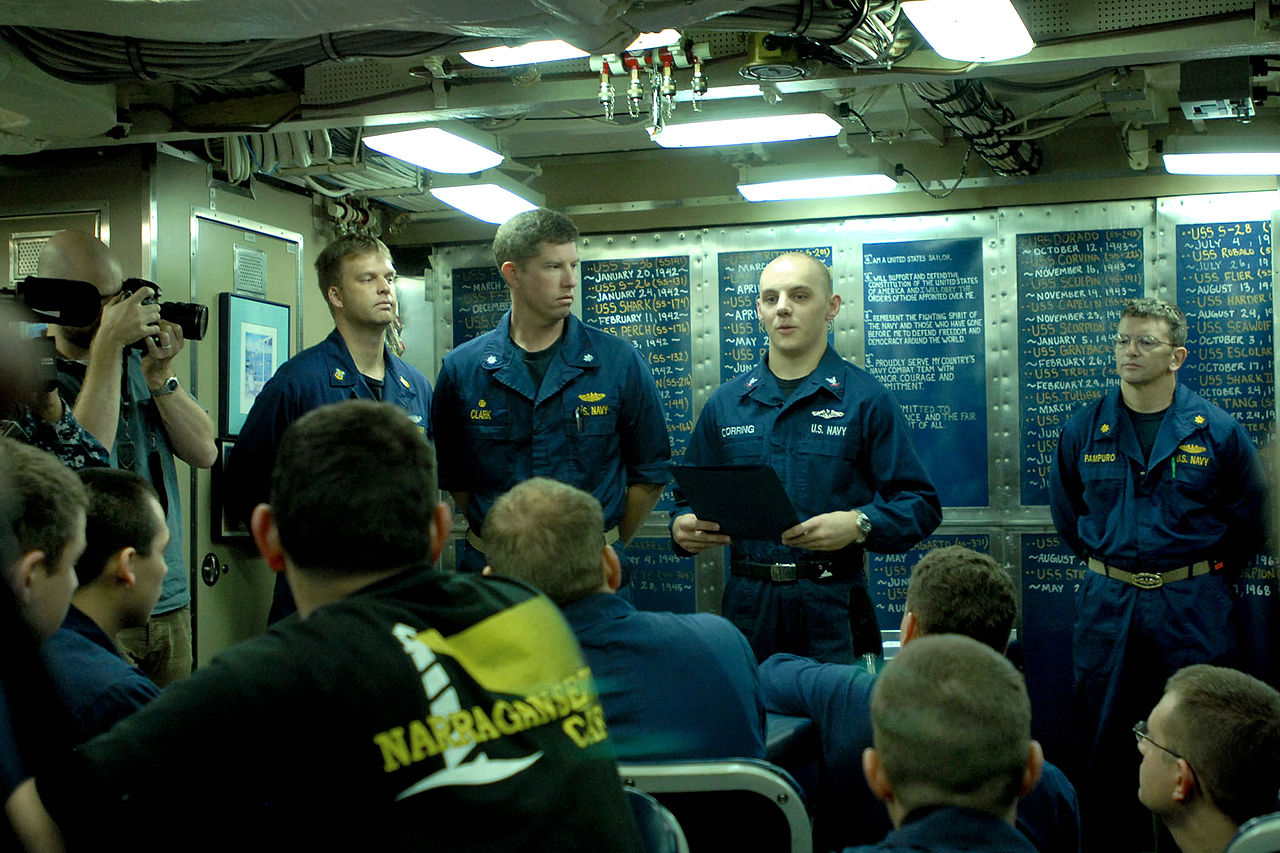
The Navy can handle a few sailors here and their testing positive for COVID-19. But if a critical mass of a ships’ crews gets infected, or if a Navy homeport like San Diego or Norfolk experiences an outbreak, it could have a serious impact on the Navy’s ability to deploy. For any military unit, an outbreak of COVID-19 is a serious threat. The difference between land-based units and ships is, at sea, it is virtually impossible to isolate the infected individual. As a separate issue, smaller ships currently have no ability to test for COVID-19. Navy leadership is scrambling to figure out how to do that right now.
Early testing, and then confinement, is the only possible way to contain an outbreak on a ship. With no testing available for smaller ships, it is possible that an outbreak would spread and infect the entire ship’s crew before even before any individual started experiencing symptoms. By that point, it would be too late to isolate any individual crew member that is infected. The Navy is always meticulous about personal hygiene and shipboard cleanliness, but these issues are now literally a matter of national security. Yet even doing everything possible in these regards may not save a ship from widescale infection due to COVID-19’s insidious nature.
In many ways, the economic, social, and political instability that accompanies a global pandemic makes the world a more dangerous place. The loss of a single aircraft carrier to a COVID-19 outbreak reduces the American military presence that guarantees the international rules-based order that has reigned since the end of the Cold War. Sidelining multiple ships simultaneously due to a series of outbreaks is a far more perilous situation that is troublingly plausible at this point.
Here’s hoping the sailors on Roosevelt and other Navy ships and submarines, standing the watch while their families face an uncertain fate at home, as well as the Navy as a whole, avoid that fate.
UPDATE: 8:15AM PDT—
25 sailors from Theodore Roosevelt now test positive for COVID-19. The Navy is expecting many more and it may be so bad that they no longer disclose just how many of the ship’s crew have contracted the virus.
According to the Daily Beast, a questionable setup is in place to care for the sick from the ship:
One U.S. service member assigned to the working parties in Guam, who asked not to be named, told The Daily Beast that some troops are afraid they will contract the coronavirus from crew members arriving from the Roosevelt.
The service member added, “We’re fucked.”
…
But in Guam on Wednesday, both Navy and Marine Corps service members set up roughly 140 military beds in a basketball gymnasium. To squeeze more troops into the gym, Navy medical professionals recommended measuring the six-foot distance per guidance from the CDC from the center of the bed rather than from the outer edges, meaning that the beds are actually three feet apart. The CDC also suggests avoiding mass gatherings as a part of its social distancing guidelines.
The Pentagon has executed a 60 days freeze on all scheduled troop movements as a measure to help stop spreading the virus among its personnel. The measure will have major implications for the U.S. military’s force posture and readiness overseas.
UPDATE: 10:25AM PDT—
Now sailors on the forward-deployed supercarrier USS Ronald Reagan have come down with COVID-19 too, raising readiness concerns even more. Read our full story and update here.
Chris Harmer is a retired Naval Aviator. He flew SH-60F and HH-60H helicopters, accumulating approximately 3,500 total flight hours. During his career, he was designated as both an Instructor Pilot and a Seahawk Weapons Instructor pilot, and is a graduate of the Navy’s Mountain Flying School. He has flown training and operational missions in the airspace of over 50 different countries. He is a regularly scheduled military and national security analyst on multiple cable television networks including Fox, CNN, MSNBC, and BBC.
Contact the editor: Tyler@thedrive.com
